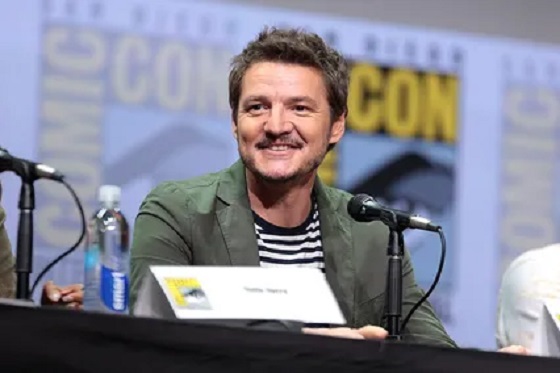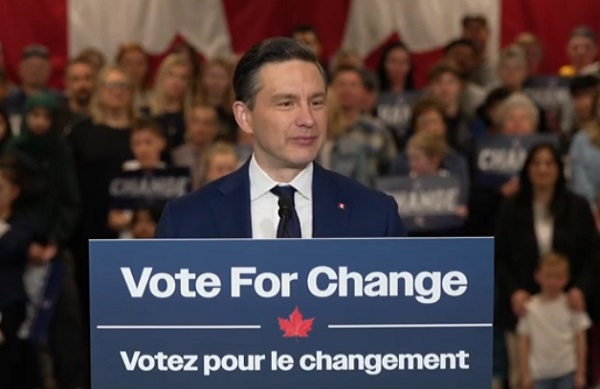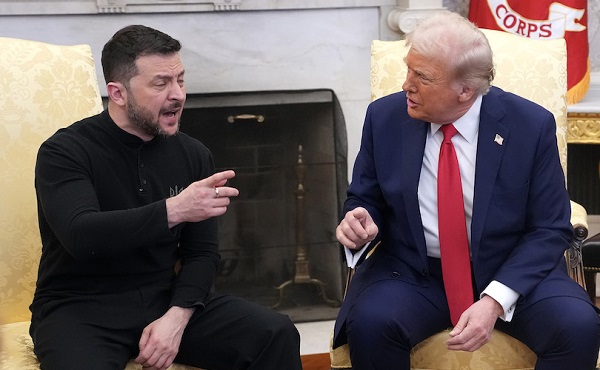Health
‘Shocking cover-up’: DOJ lawyers committed fraud in vaccine injury case, CHD attorney alleges in motion

From LifeSiteNews
By Brenda Baletti, Ph.D., The Defender
“The evidence submitted in support of the motion clearly shows that attorneys from the Department of Justice concealed and misrepresented highly relevant information from the special masters in the Vaccine Injury Compensation Program and the judges in the courts”
Rolf Hazlehurst, a Children’s Health Defense (CHD) staff attorney and father of a son with autism, filed a motion in federal court on April 2 alleging lawyers representing the U.S. Department of Health and Human Services (HHS) fraudulently concealed evidence that vaccines can cause autism.
In a motion filed in the U.S. Court of Federal Claims, Hazlehurst alleged that U.S. Department of Justice (DOJ) lawyers who represented HHS in vaccine injury cases repeatedly defrauded the judicial system – from the National Vaccine Injury Compensation Program (NVICP) to the U.S. Supreme Court.
That fraud led to thousands of families of vaccine-injured children being denied the right to compensation and the right to have their cases heard, according to the motion.
“This motion makes very serious and well-substantiated allegations of a massive scheme of fraud on the courts,” said Kim Mack Rosenberg, CHD general counsel who also is of counsel to Hazlehurst in the federal case.
“The evidence submitted in support of the motion clearly shows that attorneys from the Department of Justice concealed and misrepresented highly relevant information from the special masters in the Vaccine Injury Compensation Program and the judges in the courts,” Mack Rosenberg told The Defender.
Hazlehurst’s son Yates regressed into autism after being vaccinated as an infant. In the early 2000s, his family and thousands of others filed cases seeking compensation for vaccine-induced autism through the NVICP.
The program consolidated all of the petitions into the Omnibus Autism Proceeding (OAP) and selected six representative “test cases” – of which Yates’ was the second – as the basis for determining the outcome of the remaining 5,400 cases.
Unbeknownst at the time to the petitioners and the NVICP special masters, the DOJ’s star expert medical witness, Dr. Andrew Zimmerman informed DOJ attorneys during the ongoing omnibus proceedings that he had reversed his original opinion and determined that vaccines can and do cause autism in some cases.
In what Hazlehurst alleges was “a shocking cover-up,” instead of allowing Zimmerman to share his revised opinion, the DOJ attorneys relieved Zimmerman of his duties as a witness.
However, they continued to use excerpts from his unamended written opinion to make their case that vaccines did not cause autism – misrepresenting his position and committing “fraud on the court.”
According to the motion, the DOJ’s first act of fraud snowballed into a scheme of deception with far-reaching implications in which DOJ attorneys repeatedly misrepresented Zimmerman’s opinion and concealed other evidence that emerged during the test case hearings in the OAP in subsequent cases before multiple courts.
“As a result, thousands of cases in the Omnibus Autism Proceeding were denied compensation and the impact beyond the OAP is enormous,” Mack Rosenberg said. “This fraud affected the Vaccine Injury Compensation Program – especially the Omnibus Autism Proceeding – the Court of Federal Claims, the Court of Appeals for the Federal Circuit and even the U.S. Supreme Court.”
Hazlehurst said he is “asking the court to give this motion the serious attention it deserves.” He added, “At a minimum, the court should allow discovery and hold a hearing on this motion.”
Overturning a ruling due to fraud on the court is an extraordinary remedy reserved for extraordinary cases but according to Hazlehurst, “This motion we filed shows that this indeed is an extraordinary case.”
The DOJ has until April 30 to respond to the motion.
CHD CEO Mary Holland told The Defender, “Vaccines most definitely do cause autism, and the government has been lying about this reality for decades.”
Holland added:
With others, I published a law review article in 2011 showing that the government absolutely knew that vaccines cause autism – and yet they have covered it up and lied about it since the inception of the Vaccine Injury Compensation Program.
How many hundreds of thousands of children and families would have been spared the heartaches and crushing financial burdens of autism had the government come clean?
‘Exceptionally difficult’ to obtain compensation through NVICP
In the late 1980s, a substantial number of lawsuits for vaccine injuries related to Wyeth’s (now Pfizer) DPT vaccine, combined with “grossly insufficient compensation” for victims of vaccine injury, threatened the vaccine program’s viability.
In response, Congress passed the National Childhood Vaccine Injury Act of 1986, which established the “vaccine court.” The law gave the pharmaceutical industry broad protection from liability and proposed to compensate vaccine-injured children through the new NVICP.
The NVICP originally was designed to be a “swift, flexible, and less adversarial alternative to the often costly and lengthy civil arena of traditional tort litigation.”
To receive compensation, parents file a claim with the program.
The Court of Federal Claims (which oversees the program) appoints “special masters” – typically lawyers who previously represented the U.S. government – to manage and decide the individual claims. Attorneys may represent the petitioners, and the DOJ represents HHS.
NVICP proceedings are more informal than a typical courtroom. Unlike regular court proceedings, petitioners in the “vaccine court” have no right to discovery.
If a petitioner files a claim for a vaccine covered under the program and listed on the Vaccine Injury Table – the list of known vaccine side effects associated with certain vaccines within set time frames – it is presumed that a vaccine caused the petitioner’s injury and the petitioner is eligible for compensation without proof of causation.
However, if a petitioner experiences an “off-table injury” – an injury not listed on the table or that didn’t happen in the recognized injury time frame – the petitioner must prove by “a preponderance of evidence” that the vaccine caused the injury. Evidence includes medical records and expert witness testimony.
Claims must be filed within three years of the first symptom or two years of death.
Petitioners must provide a medical theory of the cause, a sequence of cause and effect, and show a temporal relationship between vaccine and injury.
However, the NVICP does not specify the required volume and type of evidence, so meeting the “preponderance of evidence” standard is largely at the discretion of the special master.
Petitioners can appeal NVICP cases to the Court of Federal Claims, the Court of Appeals for the Federal Circuit and ultimately to the U.S. Supreme Court.
It is “exceptionally difficult” to obtain compensation within the NVICP, Hazlehurst told The Defender. The proceedings are often turned into drawn-out, contentious expert battles and the backlog of cases is substantial.
The Vaccine Act of 1986 is unjust for petitioners, Hazlehurst alleges. And that injustice reached its zenith with the OAP, when the DOJ perpetrated fraud right under the noses of the special masters, signaling the beginning of the fraud on the courts that continues to this day.
Hazlehurst told The Defender he hopes his motion will shed light on the damage inflicted by this law and that it will ultimately help end the autism epidemic.
“The Vaccine Act of 1986 is one of the fundamental causes of the autism epidemic,” Hazlehurst said. “Understanding why this is true, and how the United States Department of Justice perpetrated fraud upon the courts, including the Supreme Court of the United States, is the key to ending the autism epidemic.”
A short history of the autism omnibus proceedings
By 2002, to address a “massive influx” of petitions alleging vaccine-induced autism, the Office of Special Masters combined over 5,000 claims into the OAP to determine whether vaccines cause autism and if so, under what conditions.
Initially, the NVICP planned to investigate causation issues and apply those general findings to individual cases. However, the program changed its strategy and instead selected six “test cases” by which it would examine the evidence for injuries caused by the measles mumps rubella (MMR) vaccine, thimerosal-containing vaccines (TCV), or a combination of both.
Then it would apply the findings of the test cases to other similar cases.
In doing so, Hazlehurst alleges, the court conflated general causation evidence with specific causation evidence from a few cases, without allowing for rules of discovery or evidence that would apply in an actual court.
This, Hazlehurst said, “was a recipe for disaster” as each test case was then used to determine the outcome for the remaining 5,000 cases.
Three cases – Cedillo v. HHS, Hazlehurst v. HHS, and Poling v. HHS – are at the center of the alleged fraud by the DOJ.
Fraud #1: the Zimmerman testimony
Hearings for the first OAP test case, Cedillo v. HHS, began in 2007. Zimmerman had worked with the DOJ to prepare an expert report on behalf of HHS finding that Michelle Cedillo’s autism had likely not been caused by the MMR vaccine.
Zimmerman later wrote in a 2018 affidavit that he attended the Cedillo hearing and listened to the testimony of Dr. Marcel Kinsbourne, another world-renowned expert in pediatric neurology.
On that basis, Zimmerman stated, he decided to clarify his written expert opinion about Michelle Cedillo, concerned it would be taken out of context.
Zimmerman spoke with DOJ attorneys to clarify that his expert opinion in the Cedillo case “was not intended to be a blanket statement as to all children and all medical science,” according to the 2018 affidavit.
He specified that advances in science, medicine and his own clinical research had led him to believe there were exceptions in which vaccinations could cause autism.
He also referred the attorneys to a paper he published with colleagues in 2006, the Poling paper, describing the case of an unidentified child who suffered regressive autism following vaccine adverse reactions. The paper suggested a possible association between mitochondrial dysfunction, vaccinations and regressive autism.
After communicating this evidence to DOJ attorneys, the DOJ dismissed Zimmerman as a witness but continued to use his written opinion as general causation evidence.
The DOJ was also allowed to use that report, submitted in one test case, as general causation evidence in other test cases.
None of the petitioners in the test cases could cross-examine Zimmerman, because he was no longer a witness. This was only possible because the federal rules of evidence do not apply in NVICP proceedings.
Yates’ case, Hazlehurst v. HHS, was the second test case in the OAP. His treating neurologist, Dr. Jean-Ronel Corbier testified Yates’ autism was likely caused by a genetic predisposition combined with an environmental insult in the form of vaccinations administered when Yates was ill. (Yates was a patient of Zimmerman in 2002.)
Corbier’s theory of causation in Yates was similar to the theory developed by Zimmerman in the Poling paper and shared with DOJ attorneys.
Yet, despite knowing Zimmerman had concluded that in a subset of children like Yates, vaccines can cause autism, the DOJ “intentionally and fraudulently” misrepresented Zimmerman’s expert testimony in its closing statements in Yates’ case, Hazlehurst alleges.
DOJ attorneys selectively quoted Zimmerman’s expert report from the Cedillo case, telling the court that Zimmerman found there was “no sound evidence to support a causative relationship with exposure to both or either MMR and/or mercury,” when Zimmerman had explicitly told the DOJ that his opinion was the opposite, according to the affidavit.
Fraud #2: the Hannah Poling case
Three weeks after closing arguments in Yates’ case, the DOJ quietly conceded Hannah Poling’s case, which was on the verge of becoming the fourth test case.
Hannah regressed into autism over several months after being vaccinated against nine diseases at one doctor’s visit.
In 2003, Poling’s father, Jon, a physician and trained neurologist, and mother, Terry, an attorney and nurse, filed an autism petition against HHS under the NVICP for their daughter’s injuries.
Jon Poling was a co-author of the 2006 paper with Zimmerman that analyzed an unnamed child, later revealed as Hannah Poling, who had a mitochondrial disorder – a condition with which Yates was later diagnosed.
In 2007, just three weeks after the lead DOJ attorney misrepresented Zimmerman’s opinion during the hearing in Hazlehurst, the same DOJ attorney submitted a report to the special masters conceding that in the case of Poling v. HHS, Hannah’s “regressive encephalopathy with features of autism spectrum disorder” (i.e., regressive autism) was caused by a vaccine injury, based upon a preponderance of the evidence standard.
This was the same neurological diagnosis Zimmerman had made for Yates in 2002.
According to court documents, if HHS had not conceded Poling, Poling v. HHS would have been designated as a test case. However, because the DOJ conceded the case, it was taken out of the omnibus and the DOJ had the case records sealed – although they were later leaked to the press and published in the Huffington Post in 2008.
In March 2008, Hannah’s parents moved to make the proceedings transparent and available to the public, but the DOJ opposed the motion and the NVICP deferred a ruling on the motion for 60 days.
During those 60 days, the DOJ filed amendments to its report conceding the Poling case. It retroactively changed the basis for compensation to say that Hannah had a “table injury.”
This meant that instead of conceding that the petitioners had proven with a preponderance of evidence that the vaccines caused her autism, they said she had a presumptive injury on the vaccine table, in which causation is presumed.
By conceding the Poling case, opposing the parents’ motion for complete transparency and changing the basis for compensation, the DOJ was able to conceal fraud and critical material evidence of how vaccines cause autism, according to Hazlehurst.
Fraud #3: appellate courts and the U.S. Supreme Court
On Feb. 12, 2009, the special masters denied compensation in the first three cases. They found the petitioners failed to establish causation between MMR or TCV vaccines and autism.
In Hazlehurst’s case, the NVICP explicitly relied on the portion of Zimmerman’s expert report that DOJ attorneys misrepresented.
The Hazlehursts appealed to the Court of Federal Claims and the Court of Appeals for the Federal Circuit, both of which upheld the special master’s decision – by relying on Zimmerman’s misrepresented opinion and knowingly fraudulent statements made by a DOJ attorney, according to Hazlehurst.
Those prior decisions directly influenced the U.S. Supreme Court’s decision in the Bruesewitz v. Wyeth.
In that case, Wyeth, now Pfizer, argued that a decision favoring the Bruesewitz family – who was attempting to sue the company for their daughter’s vaccine injury – would lead to a “flood of frivolous lawsuits,” including by the families from the omnibus.
Amicus briefs from the American Academy of Pediatrics, GlaxoSmithKline, Merck and Sanofi Pasteur on behalf of Wyeth relied on Hazlehurst v. HHS and other OAP decisions that were based on the misrepresentation of Zimmerman’s testimony that there was “no scientific basis” that vaccines cause autism.
The Supreme Court ruled that the National Childhood Vaccine Injury Act, and the NVICP it created, preempt all design-defect claims against vaccine manufacturers by individuals seeking compensation for injury or death.
In oral arguments and in their written opinions, the justices explicitly cited the portions of the amicus briefs citing Hazlehurst v. HHS and other OAP rulings that relied on the DOJ misrepresentations in their rulings.
Since that ruling, the special masters have continued to rely on the DOJ’s fraudulent claims to deny compensation to families filing complaints in the NVICP.
Robert F. Kennedy Jr., CHD chairman on leave, and Hazlehurst in September 2018 filed a complaint with the DOJ Office of Inspector General outlining what they then knew about the DOJ’s fraud during the OAP.
The DOJ Office of Professional Misconduct investigated and responded in a June 2019 letter that it found no wrongdoing.
In that letter, however, the Office of Professional Responsibility conceded the DOJ had in fact kept Zimmerman’s testimony while dismissing him as a witness in order to avoid creating the appearance that he had changed his opinion and to prevent the petitioners from cross-examining him, according to Hazlehurst.
The ‘fraud on the court’ doctrine
It has taken 17 years, Hazlehurst said, since the DOJ’s first alleged act of fraud upon the court, for him to gather all of the admissible evidence necessary to “connect the dots and reveal the DOJ’s web of deceit” to make this claim under the “fraud on the court” doctrine.
Under this doctrine, codified as Rule 60(d)(3) in the rules of the Court of Federal Claims, there is no time limit for the court to overturn a judgment made on the basis of fraud on the court.
The petitioner must demonstrate that there was fraud, intent to defraud and that the fraud affected more than one instance of litigation – putting the integrity of the judicial process at stake.
Hazlehurst alleges DOJ attorneys committed fraud by knowingly making false statements and offering evidence they knew to be false and that they did not take remedial action to disclose information they knew to be false and misleading to the court.
The special masters themselves have an obligation to consider all relevant evidence, but didn’t, in this case, Hazlehurst said. Instead, they ignored the contradictions in Zimmerman’s opinions and ignored the Poling evidence.
This is particularly problematic for NVICP cases, where petitioners can’t conduct meaningful discovery or cross-examination and the special masters’ oversight is the only meaningful safeguard to prevent the DOJ’s abuse of power, according to Hazlehurst.
“There is nothing fair about a government proceeding where the government controls the admissibility of evidence,” he said.
Hazlehurst said that by forcing people injured by vaccines into an administrative program, petitioners are deprived of the basic constitutional rights to due process and equal protection under the law. “It should be declared unconstitutional,” he said.
This article was originally published by The Defender — Children’s Health Defense’s News & Views Website under Creative Commons license CC BY-NC-ND 4.0. Please consider subscribing to The Defender or donating to Children’s Health Defense.
armed forces
Yet another struggling soldier says Veteran Affairs Canada offered him euthanasia

From LifeSiteNews
‘It made me wonder, were they really there to help us, or slowly groom us to say ‘here’s a solution, just kill yourself.’
Yet another Canadian combat veteran has come forward to reveal that when he sought help, he was instead offered euthanasia.
David Baltzer, who served two tours in Afghanistan with the Princess Patricia’s Canadian Light Infantry, revealed to the Toronto Sun that he was offered euthanasia on December 23, 2019—making him, as the Sun noted, “among the first Canadian soldiers offered therapeutic suicide by the federal government.”
Baltzer had been having a disagreement with his existing caseworker, when assisted suicide was brought up in in call with a different agent from Veteran Affairs Canada.
“It made me wonder, were they really there to help us, or slowly groom us to say ‘here’s a solution, just kill yourself,” Baltzer told the Sun.“I was in my lowest down point, it was just before Christmas. He says to me, ‘I would like to make a suggestion for you. Keep an open mind, think about it, you’ve tried all this and nothing seems to be working, but have you thought about medical-assisted suicide?’”
Baltzer was stunned. “It just seems to me that they just want us to be like ‘f–k this, I give up, this sucks, I’d rather just take my own life,’” he said. “That’s how I honestly felt.”
Baltzer, who is from St. Catharines, Ontario, joined up at age 17, and moved to Manitoba to join the Princess Patricia’s Canadian Light Infantry, one of Canada’s elite units. He headed to Afghanistan in 2006. The Sun noted that he “was among Canada’s first troops deployed to Afghanistan as part Operation Athena, where he served two tours and saw plenty of combat.”
“We went out on long-range patrols trying to find the Taliban, and that’s exactly what we did,” Baltzer said. “The best way I can describe it, it was like Black Hawk Down — all of the sudden the s–t hit the fan and I was like ‘wow, we’re fighting, who would have thought? Canada hasn’t fought like this since the Korean War.”
After returning from Afghanistan, Baltzer says he was offered counselling by Veteran Affairs Canada, but it “was of little help,” and he began to self-medicate for his trauma through substance abuse (he noted that he is, thankfully, doing well today). Baltzer’s story is part of a growing scandal. As the Sun reported:
A key figure shedding light on the VAC MAID scandal was CAF veteran Mark Meincke, whose trauma-recovery podcast Operation Tango Romeo broke the story. ‘Veterans, especially combat veterans, usually don’t reach out for help until like a year longer than they should’ve,’ Meincke said, telling the Sun he waited over two decades before seeking help.
‘We’re desperate by the time we put our hands up for help. Offering MAID is like throwing a cinderblock instead of a life preserver.’ Meincke said Baltzer’s story shoots down VAC’s assertions blaming one caseworker for offering MAID to veterans, and suggests the problem is far more serious than some rogue public servant.
‘It had to have been policy. because it’s just too many people in too many provinces,” Meincke told the Sun. “Every province has service agents from that province.’
Veterans Affairs Canada claimed in 2022 that between four and 20 veterans had been offered assisted suicide; Meincke “personally knows of five, and said the actual number’s likely close to 20.” In a previous investigation, VAC claimed that only one caseworker was responsible—at least for the four confirmed cases—and that the person “was lo longer employed with VAC.” Baltzer says VAC should have military vets as caseworkers, rather than civilians who can’t understand what vets have been through.
To date, no federal party leader has referenced Canada’s ongoing euthanasia scandals during the 2025 election campaign.
2025 Federal Election
Study links B.C.’s drug policies to more overdoses, but researchers urge caution

By Alexandra Keeler
A study links B.C.’s safer supply and decriminalization to more opioid hospitalizations, but experts note its limitations
A new study says B.C.’s safer supply and decriminalization policies may have failed to reduce overdoses. Furthermore, the very policies designed to help drug users may have actually increased hospitalizations.
“Neither the safer opioid supply policy nor the decriminalization of drug possession appeared to mitigate the opioid crisis, and both were associated with an increase in opioid overdose hospitalizations,” the study says.
The study has sparked debate, with some pointing to it as proof that B.C.’s drug policies failed. Others have questioned the study’s methodology and conclusions.
“The question we want to know the answer to [but cannot] is how many opioid hospitalizations would have occurred had the policy not have been implemented,” said Michael Wallace, a biostatistician and associate professor at the University of Waterloo.
“We can never come up with truly definitive conclusions in cases such as this, no matter what data we have, short of being able to magically duplicate B.C.”
Jumping to conclusions
B.C.’s controversial safer supply policies provide drug users with prescription opioids as an alternative to toxic street drugs. Its decriminalization policy permitted drug users to possess otherwise illegal substances for personal use.
The peer-reviewed study was led by health economist Hai Nguyen and conducted by researchers from Memorial University in Newfoundland, the University of Manitoba and Weill Cornell Medicine, a medical school in New York City. It was published in the medical journal JAMA Health Forum on March 21.
The researchers used a statistical method to create a “synthetic” comparison group, since there is no ideal control group. The researchers then compared B.C. to other provinces to assess the impact of certain drug policies.
Examining data from 2016 to 2023, the study links B.C.’s safer supply policies to a 33 per cent rise in opioid hospitalizations.
The study says the province’s decriminalization policies further drove up hospitalizations by 58 per cent.
“Neither the safer supply policy nor the subsequent decriminalization of drug possession appeared to alleviate the opioid crisis,” the study concludes. “Instead, both were associated with an increase in opioid overdose hospitalizations.”
The B.C. government rolled back decriminalization in April 2024 in response to widespread concerns over public drug use. This February, the province also officially acknowledged that diversion of safer supply drugs does occur.
The study did not conclusively determine whether the increase in hospital visits was due to diverted safer supply opioids, the toxic illicit supply, or other factors.
“There was insufficient evidence to conclusively attribute an increase in opioid overdose deaths to these policy changes,” the study says.
Nguyen’s team had published an earlier, 2024 study in JAMA Internal Medicine that also linked safer supply to increased hospitalizations. However, it failed to control for key confounders such as employment rates and naloxone access. Their 2025 study better accounts for these variables using the synthetic comparison group method.
The study’s authors did not respond to Canadian Affairs’ requests for comment.
Subscribe for free to get BTN’s latest news and analysis – or donate to our investigative journalism fund.
Correlation vs. causation
Chris Perlman, a health data and addiction expert at the University of Waterloo, says more studies are needed.
He believes the findings are weak, as they show correlation but not causation.
“The study provides a small signal that the rates of hospitalization have changed, but I wouldn’t conclude that it can be solely attributed to the safer supply and decrim[inalization] policy decisions,” said Perlman.
He also noted the rise in hospitalizations doesn’t necessarily mean more overdoses. Rather, more people may be reaching hospitals in time for treatment.
“Given that the [overdose] rate may have gone down, I wonder if we’re simply seeing an effect where more persons survive an overdose and actually receive treatment in hospital where they would have died in the pre-policy time period,” he said.
The Nguyen study acknowledges this possibility.
“The observed increase in opioid hospitalizations, without a corresponding increase in opioid deaths, may reflect greater willingness to seek medical assistance because decriminalization could reduce the stigma associated with drug use,” it says.
“However, it is also possible that reduced stigma and removal of criminal penalties facilitated the diversion of safer opioids, contributing to increased hospitalizations.”
Karen Urbanoski, an associate professor in the Public Health and Social Policy department at the University of Victoria, is more critical.
“The [study’s] findings do not warrant the conclusion that these policies are causally associated with increased hospitalization or overdose,” said Urbanoski, who also holds the Canada Research Chair in Substance Use, Addictions and Health Services.
Her team published a study in November 2023 that measured safer supply’s impact on mortality and acute care visits. It found safer supply opioids did reduce overdose deaths.
Critics, however, raised concerns that her study misrepresented its underlying data and showed no statistically significant reduction in deaths after accounting for confounding factors.
The Nguyen study differs from Urbanoski’s. While Urbanoski’s team focused on individual-level outcomes, the Nguyen study analyzed broader, population-level effects, including diversion.
Wallace, the biostatistician, agrees more individual-level data could strengthen analysis, but does not believe it undermines the study’s conclusions. Wallace thinks the researchers did their best with the available data they had.
“We do not have a ‘copy’ of B.C. where the policies weren’t implemented to compare with,” said Wallace.
B.C.’s overdose rate of 775 per 100,000 is well above the national average of 533.
Elenore Sturko, a Conservative MLA for Surrey-Cloverdale, has been a vocal critic of B.C.’s decriminalization and safer supply policies.
“If the government doesn’t want to believe this study, well then I invite them to do a similar study,” she told reporters on March 27.
“Show us the evidence that they have failed to show us since 2020,” she added, referring to the year B.C. implemented safer supply.
This article was produced through the Breaking Needles Fellowship Program, which provided a grant to Canadian Affairs, a digital media outlet, to fund journalism exploring addiction and crime in Canada. Articles produced through the Fellowship are co-published by Break The Needle and Canadian Affairs.
Our content is always free – but if you want to help us commission more high-quality journalism,
consider getting a voluntary paid subscription.
-

 Automotive2 days ago
Automotive2 days agoHyundai moves SUV production to U.S.
-

 Entertainment2 days ago
Entertainment2 days agoPedro Pascal launches attack on J.K. Rowling over biological sex views
-

 2025 Federal Election1 day ago
2025 Federal Election1 day agoAs PM Poilievre would cancel summer holidays for MP’s so Ottawa can finally get back to work
-

 armed forces21 hours ago
armed forces21 hours agoYet another struggling soldier says Veteran Affairs Canada offered him euthanasia
-

 2025 Federal Election2 days ago
2025 Federal Election2 days agoPoilievre Campaigning To Build A Canadian Economic Fortress
-

 2025 Federal Election2 days ago
2025 Federal Election2 days agoThe Cost of Underselling Canadian Oil and Gas to the USA
-

 Automotive2 days ago
Automotive2 days agoCanadians’ Interest in Buying an EV Falls for Third Year in a Row
-

 conflict20 hours ago
conflict20 hours agoWhy are the globalists so opposed to Trump’s efforts to make peace in Ukraine?





